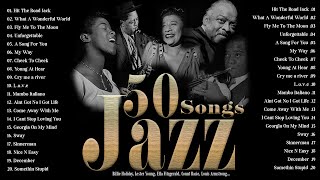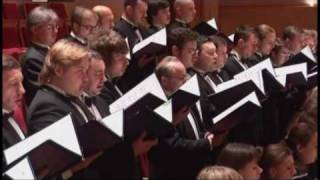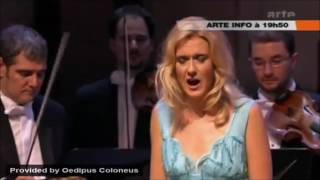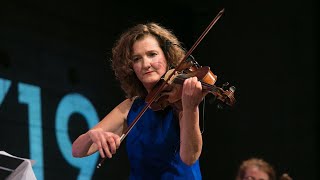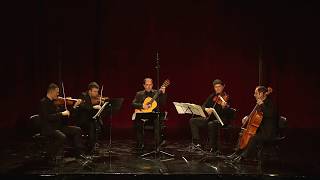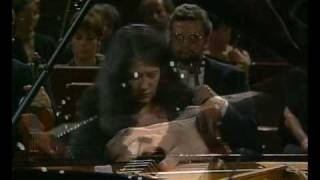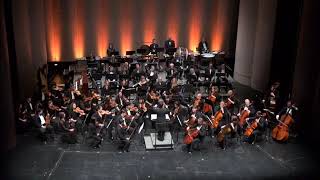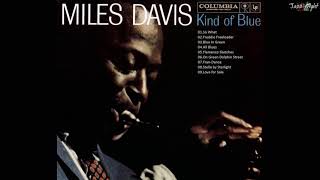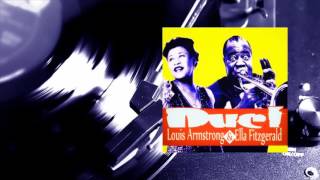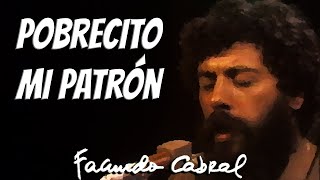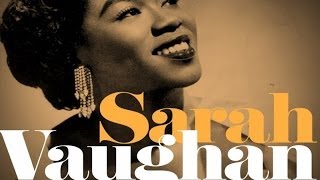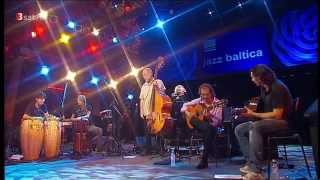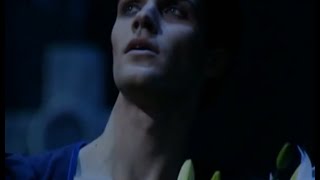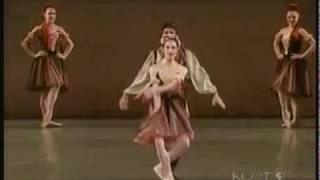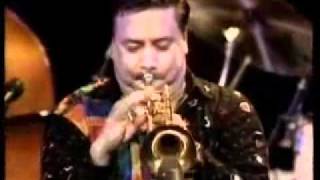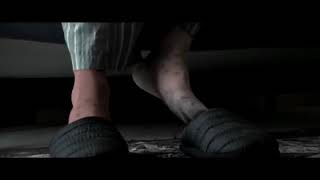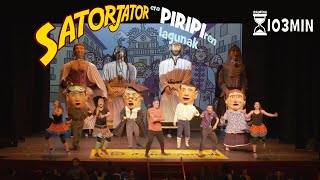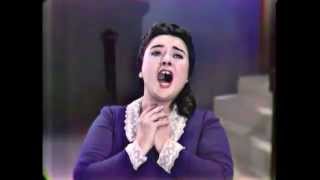April 30 is proclaimed by Unesco International Jazz Day
May 1st marks the International Day of the Workers
Recommended music videos for initiation to classical music
Jazz is a musical genre born in the USA at the end of the 19th century . The German critic Joachim-Ernst Berendt describes it this way: “ Jazz is a form of musical art that originated in the United States through the confrontation of blacks with European music. The instrumentation, melody, and harmony of jazz are derived primarily from the music of the West . The rhythm, phrasing, and harmony elements of blues are derived from African music and the musical concept of African-Americans. The same author points out the three basic elements that distinguish jazz from European classical music: a) A special rhythmic quality known as swing . b) The role of improvisation and c) An individual sound and phrasing that reflects the personality of the performing musicians.
The Very Best of Jazz . This video offers us some of the most popular songs of this musical genre: I (01:00) WHAT A WONDERFUL WORLD - Louis Armstrong .-. II (2:20) SO WHAT - Miles Davis .-. III (11:40) FEELING GOOD - Nina Simone .-. IV (14:33) FLY ME TO THE MOON - Frank Sinatra .-. V (17:00) The Look Of Love - Diana Krall .-. VI (21:42) DON'T KNOW WHY - Norah Jones .-. VII (24:47) LOVE Nat King Cole .-. (27:27) THERE IS ONLY SILENCE IN THIS SPACE .-. VIII (32:55) Tea For Two - Ella Fitzgerald .-. IX (36:11) SUNRISE - Norah Jones .-. X (39:31) Georgia On My Mind - Louis Armstrong .-. XI (42:36) My Baby Just Cares For Me - Nina Simone .-. XII (45:39) Cheek To Cheek - Ella Fitzgerald & Louis Armstrong .-. XIII (51:34) Strange Fruit - Billie Holiday .-. XIV (54:31) Stairway To The Stars - Ella Fitzgerald .-. XV (58:31) Somebody Loves Me - Ella Fitzgerald .-. XVI (1:01:06) Baby Won't You Please Come Home - Louis Armstrong & His All Stars .-. XVII (1:03:59) I Can't Give You Anything But Love - Louis Armstrong .-. XVIII (1:08:19) All Of Me - Billie Holiday .-. XIX (1:11:20) Body And Soul - Frank Sinatra .-. XX (1:15:40) Moonlight Serenade - Glenn Miller
La Internacional is the most outstanding song of the labor movement . It is considered the official anthem of the workers of the entire world and of most socialist and communist parties as well as some anarchist organizations. The original lyrics, in French, are by Eugène Pottier , and were written in 1871 as part of his work Cantos Revolucionarios . In 1888 Pierre de Geyter put it to music by order of Gustave Delory , leader of the French Workers' Party in the city of Lille ( France ) for the repertoire of the choir of the Workers' Lyre (La Lyre des Travailleurs) party. In 1889 it was adopted as the anthem of the Second International (now the Socialist International ) and as the anthem of the USSR from its creation in 1922 until 1944.
Today we can see it performed by the Mariinsky Theater Choir and Orchestra under the baton of Valery Gergiev (1953), Russian conductor, one of the most appreciated today and general director of the Mariinsky Theater and associate director of the Metropolitan Opera , the Munich and Rotterdam Philharmonic , as well as the London Symphony .
Georg Friedrich Handel ( 1685-1759) born in Halle , Germany , is one of the leading figures in the History of Music and, of course, of the Baroque (1600-1750). He wrote numerous operas, cantatas and oratorios, among which we must highlight his masterpiece, the Oratorio El Mesías . At the age of 18 he moved to Hamburg where he joined the Opera Orchestra . After three years he traveled to Florence and then to Rome . In 1710 he returned to Germany and from there to London where he settled under the tutelage of different patrons. Although he was always very jealous of his private life, there are innumerable indications that make us assume his homosexual inclination. In London he acquired his British nationality and was appointed manager of the Opera House until his death in 1759.
The aria Lascia ch'io pianga , which we offer today, is an aria belonging to the Rinaldo Opera, which had previously used it under the title Lascia la spina in the Oratorio Il trionfo del tempo e del disinganno . The interpretation runs to charge of the Czech mezzo Magdalena Kožená (1973) considered an exceptional singer of baroque music.
Jocelyn Pook (1960) is a British violist, pianist and composer. He studied viola at the Guildhall School of Music and Drama in London . In her projects she experiments with a wide variety of genres, which gives her great versatility and musical originality. Pook has composed music for theatre, television and film, a medium in which he made his debut with the soundtrack of Stanley Kubrick 's film Eyes Wide Shut (1999). Since then he has continued with the composition of music for films.
With the group The Jocelyn Pook Ensemble, he makes an unclassifiable musical proposal, in which he fuses string instruments and singing with traditional sounds from different cultures. Today he offers us this tango taken from the film “Room in Rome” .
Recommended classical music videos
Luigi Boccherini (1743-1805) was a virtuoso Italian cellist and composer, whose father was also a cellist; He received his first instrument classes from him and at the age of thirteen he went on stage as a cello soloist. Later, under Vannuci 's tutelage, he perfected his instrumental technique as well as studying harmony, counterpoint and composition. He continued with his studies in Rome and after visiting and residing in different European cities, he settled permanently in Madrid where he wrote most of his musical production. Boccherini wrote a great deal of chamber music (over one hundred quintets and ninety other string quartets, as well as trios, sonatas, and pieces in other genres), and his orchestral repertoire includes nearly 30 symphonies and concertos.
An important legacy of chamber music produced by Boccherini is the 16 Quintets for guitar , of which it has only been possible to recover and recompose nine of them. The fact that the music of these quintets comes from previous works by the same author is striking in our time, a very common practice at that time. Today we offer the Guitarquintet Nr. 9 C-Dur, G 453 structured in four movements: I (0´02´´) ALLEGRO MAESTOSO ASSAI .-, II (11´50´´) ANDANTINO .-. III (17´03´´) ALLEGRETTO .-. IV (24´02´´) LA RITIRATA DI MADRID, in version by Admir Doçi guitar, Xhoan Shkreli violin, Fation Hoxholli violin, Hindenburg Leka viola, and Vlorent Xhafaj violoncello.
Maurice Ravel (1875-1937) born in Ziburu/Ciboure (Basque Country in France) inherited his meticulousness at work from his father, an engineer of Swiss origin, and from his mother, born in Mendata (Bizkaia), his passion for music with the folk songs with which he adorned his childhood. A few months after he was born, the family moved to Paris , where he began his piano studies at the age of six. At the age of 14, he entered the Paris Conservatoire where he had the opportunity to study with Gabriel Fauré . In 1901 he premiered his Jeux d'eau , a piano work with which he began to make his way in the musical circles of Paris where the influence of Ravel on Debussy and vice versa was discussed. In 1921 he lived until his death in a mansion near Paris , where eminent musicians and intellectuals met.
Maurice Ravel 's Piano Concerto in G major, was composed between 1929 and 1931, with a three-movement structure; Ravel said that with this work he did not seek to be profound but to entertain, in the manner of Mozart and Saint-Saëns and among his influences are jazz and Basque popular music . The first performance was given in Paris in 1932 by the pianist Marguerite Long , with the Orchester Lamoureux conducted by the composer. Within months, the work was heard in major cities in Europe and the United States and has been recorded countless times by pianists, orchestras, and conductors from around the world.
Structure I (0´40´´) ALLEGRALLY. The first movement opens with a single high-pitched whip crack, followed by an exposition containing five separate themes. Orenstein says of them that the first suggests a Basque popular melody, the second the influence of Spain and the other three derive from the language of jazz . The development section, "an animated game", is followed by a cadenza-like passage leading into the .- recap. II. (8´58´´) ADAGIO ASSAI. Unlike the preceding movement, it is a calm theme of Mozartian serenity written in ternary (ABA) form. Ravel said about it: "That flowing sentence! How I worked measure by measure! It almost killed me!". The first theme is presented by the piano, without accompaniment. Ravel said that he took the theme from Mozart 's Clarinet Quintet Larghetto as his model. The second theme is presented by the woodwinds to, after a few episodes, return to the first theme through the beginning of the English horn under the "delicate filigree in the high register" of the piano .-. III (17'54'') PRESTO. It is by far the shortest of the three movements. Four energetic chords at the beginning launch what Fleury describes as "an unstoppable attack, spurred on by the shrieks of the clarinet and piccolo, the donkey braying of the trombone, and occasional fanfares blossoming into the brass." Reviewing the work's premiere, Henry Prunières wrote: "The spirit of jazz certainly animates this last movement... but with extreme discretion."
The version that we offer today is starring the Argentine pianist Martha Argerich accompanied by the French National conducted by the Swiss maestro Charles Dutoit
Aaron Copland (1900-1990) was an American composer of classical music and film of Russian-Jewish origin. His work is influenced by impressionism and especially by Igor Stravinsky . He stood out along with George Gershwin as one of the most important composers of the musical identity of the United States in the 20th century . In the fall of 1917 he began studies in harmony and counterpoint with Rubin Goldmark ; At his suggestion, she studied piano first with Victor Wittgenstein and from 1919 with the famed pedagogue Clarence Adler . In June 1921, he went to France to study with Nadia Boulanger ; In 1924 he returned to the USA and the following year he was the first composer to receive the Guggenheim Fellowship , which he renewed in 1926.
Appalachian Spring (Appalachian Spring) is a musical work composed by Aaron Copland , which has achieved wide circulation and popularity as an orchestral suite. The ballet , arranged for a thirteen-piece chamber orchestra, was commissioned from Copland by choreographer Martha Graham with funding from the Coolidge Foundation chaired by Elizabeth Sprague . "I knew some crucial things: that this play was about the American pioneer spirit, about youth and spring, about optimism and hope." The premiere took place on October 30, 1944, in Washington DC , with Martha Graham as principal dancer. The scenery was designed by Japanese-American sculptor Isamu Noguchi . The Ballet received the 1945 Pulitzer Prize for Music and the New York Music Critics Award .
Today we offer the orchestral suite of the work in a version by the Texas Medical Center Orchestra conducted by Libi Lebel .
Miles Dewey Davis (1926-1991), known as Miles Davis , was an American jazz trumpeter and composer. He is one of the most relevant, innovative and influential figures in the history of jazz , along with artists such as Louis Armstrong, Duke Ellington, Charlie Parker or John Coltrane . Davis ' career, which spans fifty years, covers the history of jazz throughout the entire second half of the 20th century , characterized by its constant evolution and search for new artistic paths: Davis participates with equal force in bebop and cool , like hardbop and the jazz avant-garde , especially in its modal aspect and its fusion with rock . The sound of his trumpet is soft and melodic, based on short notes, tending towards lyricism and introspection, characteristic for his use of the mute.
Kind of Blue is a jazz studio album by Miles Davis released in August 1959. Miles was accompanied by legendary saxophonist John Coltrane and double bassist Paul Chambers , completed by Julian "Cannonball" Adderley , on alto saxophone, Jimmy Cobb on drums and Bill Evans on piano. The album was based on modal forms, which allowed wide possibilities of transit through scales starting from some predetermined note instead of the linear sequence of chords that jazz developed until then. Considered the masterpiece of the genre , it became a great commercial success with sales of more than four million copies in the United States and the best - selling record of Davis ' career and jazz history .
Subject index : I (0:00) So what .-. II (9:26) Freddie Freeloader .-. II (19:13) Blue In Green .-. IV (24:51) All Blues .-. V (36:34) Flamenco Sketches .-. VI (45:46) On Green Dolphin Street .-. VII (55:40) Fran-Dance .-. VII (1:01:28) Stella by Starlight .-. VIII (1:06:14) Love for Sale
Recommended music videos for all tastes
Louis Armstrong (1901-1971), also known as Satchmo or Pops , was an American jazz trumpeter and singer. He is one of the most charismatic and innovative figures in the history of jazz and probably its most popular musician. Thanks to his musical skills and his brilliant personality, he transformed jazz from its initial status as dance music, into a popular art form. Although at the start of his career he cemented his fame above all as a trumpeter, later it would be his status as a vocalist that would consecrate him as an internationally recognized figure and enormous influence for jazz singing.
Ella Fitzgerald (1917-1996), considered the most important and influential singer in the entire history of jazz and known as the Queen of Jazz , was an American jazz singer, although her repertoire included gospel, blues, swing, bossa nova, pop, Christmas songs , etc., etc. Possessing a vocal range of three octaves, she won fourteen Grammy Awards , including the Grammy for her entire career, and was awarded the United States National Medal of Arts.
Facundo Cabral —in the beginning, Indio Gasparino—, was an Argentine singer-songwriter, poet, writer and philosopher. Although he composed songs and some of these transcended to the Latin American level such as "I am not from here nor am I from there", his work also consisted of telling stories with an aesthetic that mixed social criticism, satire, mysticism, Christianity, anarchism, optimism, hedonism. and freedom. In them he constantly quoted Jesus, Atahualpa Yupanqui, Krishnamurti, Borges, Whitman and Teresa of Calcutta , among others. Facundo Cabral was murdered in Guatemala City on July 9, 2011 by hitmen who mistook him for a businessman linked to drug trafficking. UNESCO declared him a "World Messenger of Peace" in 1996 and he was nominated for the Nobel Peace Prize in 2008.
Sarah Vaughan (1924–1990), nicknamed Sassy and La Divina, was an American jazz singer. Along with Billie Holiday and Ella Fitzgerald , she is considered one of the most important and influential female voices in the genre. Her voice is characterized by its deep tonality, her enormous versatility and her vibrato control with a wide range, which allowed her to jump from the low to the soprano register with great ease. He was one of the first vocalists to incorporate bebop phrasing into his singing, also placing him at the level of instrumentalists such as Charlie Parker and Dizzy Gillespie . His most outstanding abilities are his harmonic inventiveness and his high sense of improvisation. Over the years his voice darkened, though it never lost its power and suppleness. She was also a master at scat .
Pepe Habichuela (1944) is a flamenco guitarist born in Granada . He belongs to a flamenco dynasty started by his grandfather, known as Habichuela el Viejo (from whom he took his nickname), and continued by his father José Carmona , his three brothers Juan, Carlos and Luis and his son Josemi , a member of the successful musical group of flamenco-fusion Ketama . His artistic beginnings took place in Granada . In 1964 he moved to Madrid where he performed in several flamenco tablaos and shared the bill with renowned artists such as Juanito Valderrama , Camarón de la Isla and Enrique Morente . Since 2014, he has been going to Iruña/Pamplona every year to participate in the Flamenco On Fire festival.
Dave Holland (1946) is an avant-garde jazz bassist and composer. He has played and recorded records with other famous jazz musicians, as a conductor and as an accompanist; He has worked alongside Miles Davis, Stan Getz, Chick Corea, Anthony Braxton, and other notable musicians. In 2010 he got together with Pepe Habichuela to offer us these delicious minutes of flamenco and jazz fusion at the annual Jazz Baltica festival, a festival that is held near Lübeck (Germany) and attracts jazz musicians from all over the world, since it is a prominent event on the annual jazz calendar. What makes this festival so unique is its intimate nature due to the relatively small concert halls, which limits the number of attendees giving them unusually close access to jazz artists.
Recommended peculiar videos
Adolphe Adam (1803-1856) was a French composer born in Paris and author of abundant stage music. He was the son of the renowned pianist and professor at the Paris Conservatoire , Lois Adam , with whom he began his musical studies. His first successes reached him as an adult with the ballet Giselle , which we offer today, and the opera Si j'étais roi ; by then he had already written several ballets and operas. In total he wrote 40 operas, 14 ballets and various cantatas, hymns, masses, choirs, piano pieces, pantomimes, military marches and plays; Of all these compositions, it is worth noting, in addition to those already mentioned, the ballet Le Corsaire and the worldwide known Christmas carol Cantique de Noël , in its English translation, as O Holy Night
Giselle is a ballet in two acts with music by Adolphe Adam , choreography by Jules Perrot and Jean Coralli , and libretto by Théophile Gautier and Jules-Henri Vernoy, based on the play De l'Allemagne (1835) by Heinrich Heine . Giselle is a peasant girl of great beauty and extreme innocence; Deceived and betrayed, her heart breaks, falling into despair that will drag her towards madness and death. Giselle is one of the masterpieces of ballet blanc , a ballet scene in which all the members of the dance group appear dressed in white. Since the days of the romantic ballet these scenes have been populated by ghosts, dryads, sylphs, fairies or similar creatures.
Our protagonists today are Roberto Bolle (1975, étoile of the La Scala Theater and principal dancer of the American Ballet Theatre ) and Svetlana Zakharova (Ukrainian artist who performs as prima ballerina in the best theaters in the world).
The Brahms Quartet premiered in Hamburg in 1861; Schoenberg orchestrated the work in 1937, and it was premiered by the Los Angeles Philharmonic under the baton of then-music director Otto Klemperer in one of the orchestra's Saturday Night Concerts. Schoenberg explained the reason for his orchestration almost a year after the premiere. The composer wrote: "1) I like the piece. 2) It is rarely played. 3) It is always played very badly, because the better the pianist, the louder he plays, and you don't hear anything from the strings. I wanted to listen all at once, and I have succeeded." ( excerpted from John Mangum's article). Today we can see it choreographed by George Balanchine in Damian Woetzel 's interpretation with the New York City Ballet .
Arturo Sandoval (1949) is a Cuban jazz trumpeter and pianist; he has received 9 Grammy Awards, having been nominated 17 times; he has also won 6 Billboard Awards and an Emmy Award. Sandoval began studying music at the age of 13. After his military service he helped found the Irakere group with saxophonist Paquito D'Rivera and pianist Chucho Valdés , a group that became the most important jazz ensemble in Cuba ; their presentation in 1978 at the Newport Jazz Festival in New York introduced them to the American public. In addition to his long career in the jazz world, Arturo Sandoval also has a musical career as a classical performer and as a composer and performer on various film soundtracks.
The txalaparta is a traditional percussion instrument from the Basque Country ; it generally consists of two supports (baskets, chairs, stools, etc.); on these, some insulating material (corn leaves, old rolled up sacks, dry grass, etc.) and on this, a plank that is struck with four sticks (two for each txalapartari).
Although traditionally each txalaparta used to have two or three wooden boards, nowadays it is common to find txalapartas made up of a dozen boards. Its use was closely linked to the work of making cider. After crushing the apple, a dinner was held and the party could last until the wee hours of the morning. Recently, as in the video that we are presenting today, the stone Harriparta or Txalaparta is also beginning to become popular.
The present version of The International is recorded in the language of wood and stone, which when joined form the melody of the well-known song. The singular and the universal merge: one of the most singular musical instruments in Euskal Herria , the Txalaparta , interprets the universal anthem of the working class. The version is the work of Hutsun Txalaparta Taldea , at the request of the Basque union LAB .
Recommended music videos for children
Various Wikipedia articles have been used to write these texts.
The texts of Videomusicalis are written in Basque, Spanish and English.





